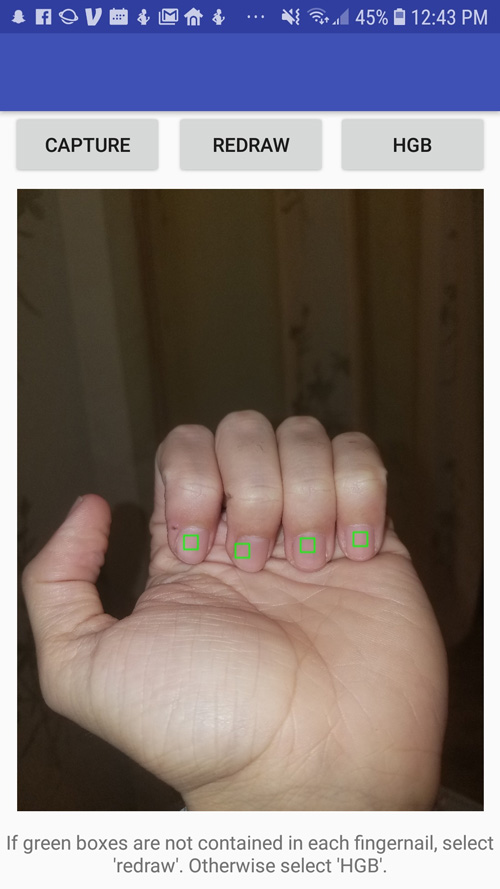Smartphone app uses fingernail photos to detect anemia
Click Here to Manage Email Alerts

Researchers at Emory University and Georgia Institute of Technology have developed a smartphone app designed to detect anemia.
The novel app uses pictures of a person’s fingernails to estimate their hemoglobin levels.
“All other ‘point-of-care’ anemia detection tools require invasive blood sampling or external equipment, and represent trade-offs between invasiveness, cost and accuracy,” Wilbur A. Lam, MD, PhD, associate professor in the department of pediatrics and biomedical engineering at Emory University and Georgia Institute of Technology, said in a press release.
In a cohort of 265 patients with various anemia etiologies, the app effectively measured hemoglobin levels without requiring a clinic visit or bulky external equipment.

HemOnc Today spoke with Lam about how the idea for the app came about and what still needs to be improved before the technology becomes more widely available.
Question: How did the idea for this app come about?
Answer: As a pediatric hematologist and biomedical engineer, I run a lab that is focused on developing new ways to study, diagnose and treat hematologic diseases, of which anemia is one of our areas of research focus. This project specifically came about when one of my graduate students came to me about a PhD project that he wanted to conduct. He has a couple of interesting aspects to his background. He is a great computer coder. Also, he has beta-thalassemia major, is chronically anemic and requires transfusions every month. When he approached me about this, I immediately thought he would be perfect for this project and the perfect test subject. I suggested that he take pictures of his body parts right before and right after he receives a transfusion, and to do this for several months, then develop code to see if he could determine the association between hemoglobin levels and certain aspects of the photos. Lo and behold, after a few cycles, he showed me that there is a very tight correlation between the metadata of the smartphone photos — especially of the fingernails — and hemoglobin levels.
Q: What efficacy have you observed so far?
A: As of now, the app is good enough to differentiate normal from mildly anemic to moderately anemic to severely anemic. This means if someone uploads a photo of their fingernail, the app would be able to ask the individual if they are OK, if they need to call their physician soon, or if they need to call 911. I should note, however, that we are constantly adding more patient photos and their hemoglobin levels. With every new patient entered into our database, the smartphone app gets ‘smarter’ — its accuracy increases. This app also can be personalized to specific individuals, such as those who are chronically anemic. We do this by inputting photos of the fingernails and blood hemoglobin levels once or twice. The app then recognizes the individual and modifies or caters the algorithm to that one person.
Q: What still needs to be confirmed/improved before the app becomes more widely used ?
A: We are looking at ways to make it more user-friendly. This will take us several more months, but we should be able to make this app available by the end of spring or early summer.
Q: How might this app change clinical practice ?
A: One could envision that for screening, this could be a real game-changer, even in developed countries, because everyone is at risk for anemia at some point in their lives. On the other end of the spectrum, patients who are chronically anemic can monitor their disease, and this could be a way to decrease the number of emergency room visits and hospitalizations and even tailor therapies so that patients can better define when they need a transfusion or need to see a physician. Finally, global health is a major factor, as this app could be used in low-resource settings. While those areas may suffer from a lack of medical infrastructure, the cellphone infrastructure is actually an emerging market and often better than that found in developed nations.
Q: What is the overall potential of smartphone technology for the detection and diagnosis of hematologic conditions?
A: We are hoping that this is the first case of a smartphone app being able to address a hematologic issue completely noninvasively. This app can likely be used to monitor bilirubin levels, which are elevated in hematologic conditions that cause hemolysis and jaundice or in liver disease. We may be able to develop a smartphone-enabled, noninvasive metric of the blood test to detect this. This is another example for how this technology can help. – by Jennifer Southall
Reference:
Mannino RG, et al. Nat Commun. 2018;doi:10.1038/s41467-018-07262-2.
For more information:
Wilbur A. Lam, MD, PhD , can be reached at Emory University, 201 Dowman Drive, Atlanta, GA 30322; email: wilbur.lam@emory.edu.
Disclosure: Lam has a financial stake in this technology, for which a patent is currently pending.
